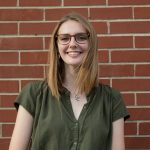The COVID-19 Task Force has been responsible for keeping students and staff updated all semester.

By: Charlotte Renner
As Webster University students, along with faculty and staff, were whipped into the whirlwind that is the COVID-19 pandemic, the COVID-19 Task Force worked behind the scenes to call the shots.
The panel consists of a group of individuals who represent vital parts of the university. Its decisions have affected every student’s life during this pandemic, decisions that were not made with ease.
“I am not afraid to make a tough decision, but before I do it, I need to know how are we going to take care of those who are the most vulnerable,” said Webster President Julian Schuster who formed the task force in early March. “Every decision that we have made in terms of college was guided to protect and shelter those who are most vulnerable to negative impacts of our decisions.”
Some of the tough choices made by the COVID-19 Task Force included bringing study abroad students back to the United States, moving classes to online formats, closing student housing, and moving the spring commencement ceremony to a virtual format and having in-person ceremonies on campus in the fall.
Closing student housing proved to be the most difficult decision to make.
“Five days before [closing student housing], I was adamant that we were not going to push people out,” task force member and Director of Student Affairs John Buck said. “So much happened in a five-day window—that’s a good example of a decision that was a perfectly fine decision five days earlier, but then have more information come into the mix that really said, ‘Now we have to move everybody out.’”

Photo by Andrew McMunn
Professor Jody Spiess, the only faculty member and public health expert on the task force, was a last-minute addition that proved to be a very important one. Spiess is responsible for prevention and mitigation, which is attempting to prevent the virus from spreading and then keeping as many people as safe as possible with the least amount of harm.
Due to these considerations, Spiess was certain that, albeit the toughest choice, closing campus housing was the right move.
“To get to move out of your parents’ house, and be living your life and have some independence and then all of the sudden be told you have to go home? That was hard because I know it changed everything for the students,” Spiess said. “But then, that’s where I would have to go, ‘I want them alive. I want them safe.’ While this may be a hard season of life, we have to do what’s best.”
Main components of the university represented in the task force include Information Technology, Human Resources, Finance, Academic Affairs, Communications and more. This brings a wide variety of viewpoints and needs to hash out during meetings.
“There’s two parts to it. One is like this collaborative group that’s talking about the problem at a 20,000-foot level, and then there’s specialized areas that each of us bring that we can focus on,” Buck explained. “It’s been both talking about a bigger issue or it’s been, here’s how we’re gonna do refunds for housing, or here’s what we’re gonna do to facilitate moving out, or communicating with parents after that. So it’s the big picture and then details, too.”
Although the decisions made by the task force have taken intense collaboration to satisfy all components of the university, every decision has been unanimous.
However, the task force’s work is not done — they still have a standing phone call meeting every business day at noon to discuss future decisions concerning Webster University and COVID-19.
“If anything keeps me awake, it is not whether I will get sick or not. It is what is going to happen in our university’s fall semester,” Schuster said. “What are going to be impacts on our students? We will do whatever we can to welcome people to come back. I will never say we will try to go about business as usual because I do not believe that this will go away overnight.”
Other members of the task force are keeping an optimistic outlook for the fall semester.
“I can tell you that I am walking in faith and full expectation that we’re gonna be back in August,” Buck said. “For me, there’s no other way to look at it right now because we don’t have enough information to know what the next 12 to 15 weeks brings. There’s a lot of decisions going to be made at a federal level, at a state level, county or public health level that are gonna be influential.”
From a public health perspective, Spiess believes that with the right actions now, Webster could be open in the fall.
“I think if our local leaders keep the stay-at-home order for several more weeks, we might ride this out okay. If we rush and let people go back to normal before May or right at May 1. I think we might have another wave,” Spiess said. “That’s all just me guessing from what we’ve seen from this virus and from other places. What has been so hard up until now is we don’t know anything about the virus, and we don’t know how it’s gonna behave and we’re learning that. This is not like the flu. The flu we have a vaccine for. We know what to do with that. We didn’t know what to do with this.”
For more information, go to http://www.webster.edu/covid19/taskforce.html.




